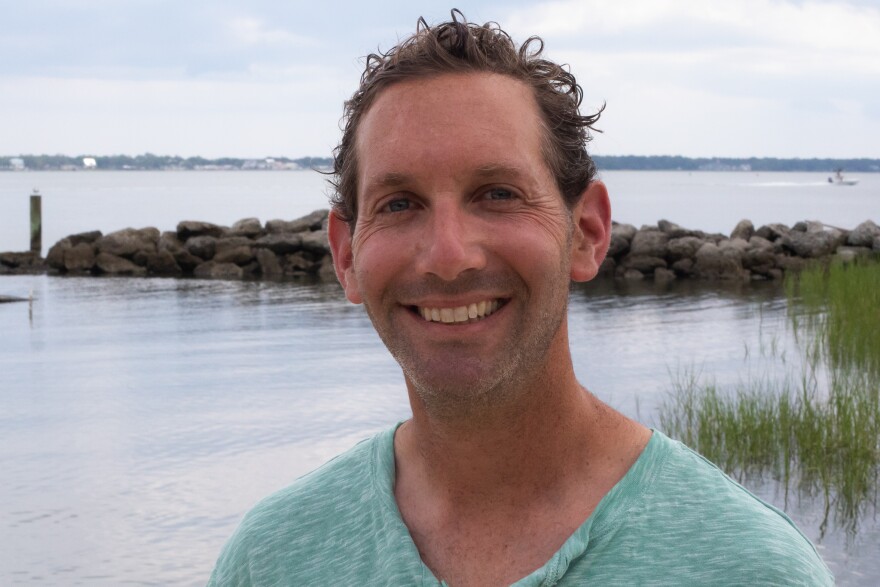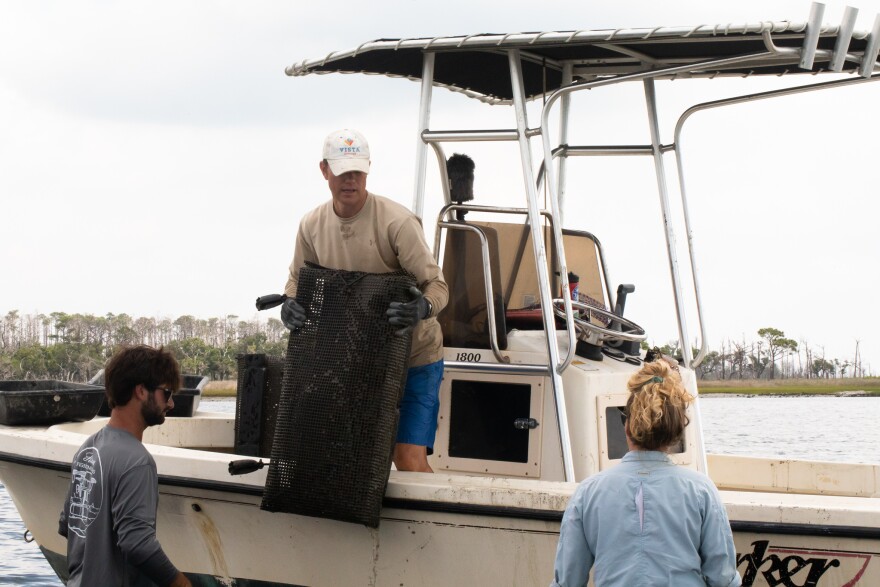Oyster farming is a large and growing industry in North Carolina.
Commercial landing data from the North Carolina Department of Environmental Quality tell the story of an industry on the rise; farms grew from producing $500,000 worth of oysters in a single year to $5 million since 1994.
But something — or some combination of things — is killing Carolina oysters.
“On the biological end, what it looks like is oysters starving,” said Tal Ben-Horin, an assistant professor at the College of Veterinary Medicine at North Carolina State University. “We see oysters that are healthy one day, or seemingly healthy one day, and dying in mass.”

These mortality events have sporadically occurred in oyster farms over the last ten years. Ben-Horin and his team deployed six field sites in North Carolina to monitor sample oysters during one of these die-offs.
“When you look at live oysters sampled during this mortality event, they seem to be withering away,” said Ben-Horin. “The visceral mass, which is like the meaty bit of tissue, seems to implode within itself.”
Jonathan Lucas, a research associate with the shellfish pathology lab at North Carolina State University’s college of veterinary medicine, is a member of the field team that monitors these sample sites.
He drove the team’s research vessel to one of the sample sites in Eastern Carteret County. Once Lucas sorted out the dead oysters, he measured the remaining samples’ shell sizes.
“You can have sub-lethal effects,” Lucas said, “meaning that they're not dying, but they're also not growing. That's not because the oysters are shrinking — what that means is we're seeing selection for size.”

Two of the team’s sites experienced mortality events. One site lost as much as 80% of the oysters, while the other site lost approximately 40%.
“We've noticed the mortality event in our samples at the exact same time that the growers started noticing it as well,” said Lucas. “We have a data set of what the conditions are like leading up to this event, during it and after.
“I believe that we'll be able to piece together a pretty good description of what happened at the end of this.”
After the team returns the survivors to the water, they bring water samples back to Mark Ciesielski, a graduate student at the Noble Lab at UNC’s Institute of Marine Sciences, where he analyzes the microbial contents of the water surrounding the oysters.
“Rather than just looking at the oyster, the physiology and the responses that the oysters have,” said Ciesielski. “We want to know — [of] all of those microbial populations, whether they be bacterial or parasitic protozoans — what the presence of those pathogens looks like and how that may be overwhelming the oyster and contributing to those physiological responses.”



The ocean hosts bacteria, protozoa, viruses, and much more. Every microscopic passenger in the water column flows through the local oyster population and is filtered through their gills. When an oyster becomes stressed, its relationship with these microorganisms can change.
“It's been very hot and very salty this summer,” Ciesielski said. “So, that offers additional challenges to oysters, which may prevent them from being able to stave off some of the challenges from the microbial populations.
“It's likely all of these factors coming together that are resulting in what we see as mass mortality events.”
Chris Matteo, president of the North Carolina Shellfish Growers Association, has witnessed these mortality events firsthand. He owns two farms and sells oyster seed from his nursery, which helps buttress his business against a mortality event that recently struck one of his grow sites.
“It's a total collapse,” said Matteo. “In some cases, 90% of people's crops are decimated inside of a couple of weeks. This one, we're getting reports anywhere from 60 to 90% of people's crops.”
Farmers who experience one of these mortality events lose more than just money. “Oyster farming is a year-round effort,” said Matteo. “people have so much time and effort in their crop, and they're banking on selling that crop.”
That means more work for less pay, a fact that carries financial and psychological ramifications for farmers. Grant Murray is an associate professor at the Duke University Marine Lab in Beaufort, North Carolina. He is studying how coastal communities change as small-scale fisheries grow and develop.
“You lose one operation with a handful of employees,” said Murray. “That's a big shock.
“What a lot of coastal communities want is [for] their families to be able to find a meaningful, dignified, reasonably lucrative position in their communities. And when that fails because of a die-off [...], that can have a significant generational impact on our communities.”
Lucas and the other scientists associated with the project acknowledged that this research would be impossible without industry stakeholders' collaboration.
“It's a win-win,” said Lucas. “It's a win for the grower because he gets to help out with research that hopefully helps his industry succeed and do better. And it's a good deal for us because we get to conduct experiments and ask scientific questions.”
Matteo, the oyster farmer, emphasized that despite the severity of these summer mortality events, consumers do not need to avoid oyster products.
“The product is totally 100% safe,” said Matteo. “The issues that the scientists are seeing purely affect the oyster itself and the health of the oyster.
“That that's one big point that I really wanted to drive home because the last thing a grower needs [...] is for folks to shun their survivors.”







